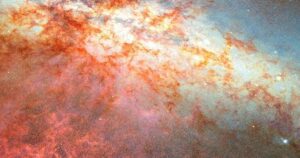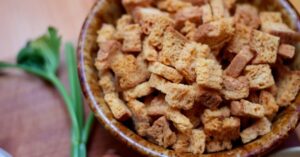I found my first encounter with sea worms a bit scary. I began to study them because I was fascinated by a question: how can something as simple as a worm living in the mud of an estuary in Newcastle know exactly what day of the year it is, so that the entire population can reproduce on the same day?
So in the early days of my PhD I visited a worm farm in Newcastle where they grew worms to sell as fishing bait.
I was encouraged to dip my hand into a large tank of squishy mud. As soon as I put my hand in, I realized why the mud was squirming: it was a writhing mass of ragworms.
Rag worms are quite large. They can grow up to 3 m long and are about as thick as your thumb. They have teeth – and they bite.
All these tough Geordie guys were watching me, waiting for me to scream. So I didn’t make a sound.
But inside I was definitely screaming. There were thousands of worms in that tank. It felt like I was touching squiggly spaghetti and that night I dreamed I was eating spaghetti that turned into worms in my mouth. I still have that dream sometimes – but luckily, in my entire 25 years of working with worms, I’ve never been bitten. And as I began to study these animals, I became more and more fascinated by their wonderful strangeness.
There are more than 10,000 different species of worms, with many different adaptations. They can and are all kinds of colors often very iridescent. One of the most beautiful worms is the Christmas tree worm, which you see on coral reefs looking like small brightly colored Christmas trees. They are sedentary and they have no teeth.
All the marine worms I work on are “polychaetes”, which means “many feet”, referring to their – in some cases – hundreds of beautiful, paddle-like feet, which enable them to swim and burrow efficiently in mud.
When I talk to kids about marine worms, I try to convince them that worms are better than sharks because worms are able to completely regenerate any part of their bodies, including their heads. And not all worms are victims: some are ferocious predators of fish themselves.
In Samoa, people eat sea worms – they are treated as a delicacy. But I haven’t tasted one and I have no desire to.
A large part of my research is firstly to try to understand the impact that human activities have on worms and secondly the important jobs that worms do for healthy ecosystems. Without worms and other marine animals that live and dig in the mud and recycle nutrients, there would not be enough nutrients in the surface oceans for photosynthesis to occur.
Worms are also food for all kinds of fish and birds, and we pollute them: we mimicked the levels of cocaine and antidepressants measured in the mud in Bristol Harbor in a laboratory experiment and looked at how they affected worms’ behaviour. The worms stopped eating, lost weight and stopped digging in the mud.
And these days, if we collect worms from almost anywhere in the world, we will find plastic in their stomachs.
At the moment, as part of the Convex Seascape SurveyI look at how worms affect carbon sequestration in sediments. We want to know if a healthy seabed full of healthy worms is better for keeping carbon locked away and for carbon cycling processes. Better protection of worms on the seabed could therefore have much wider implications than just biodiversity – it could be a small part of the solution to the climate emergency.






